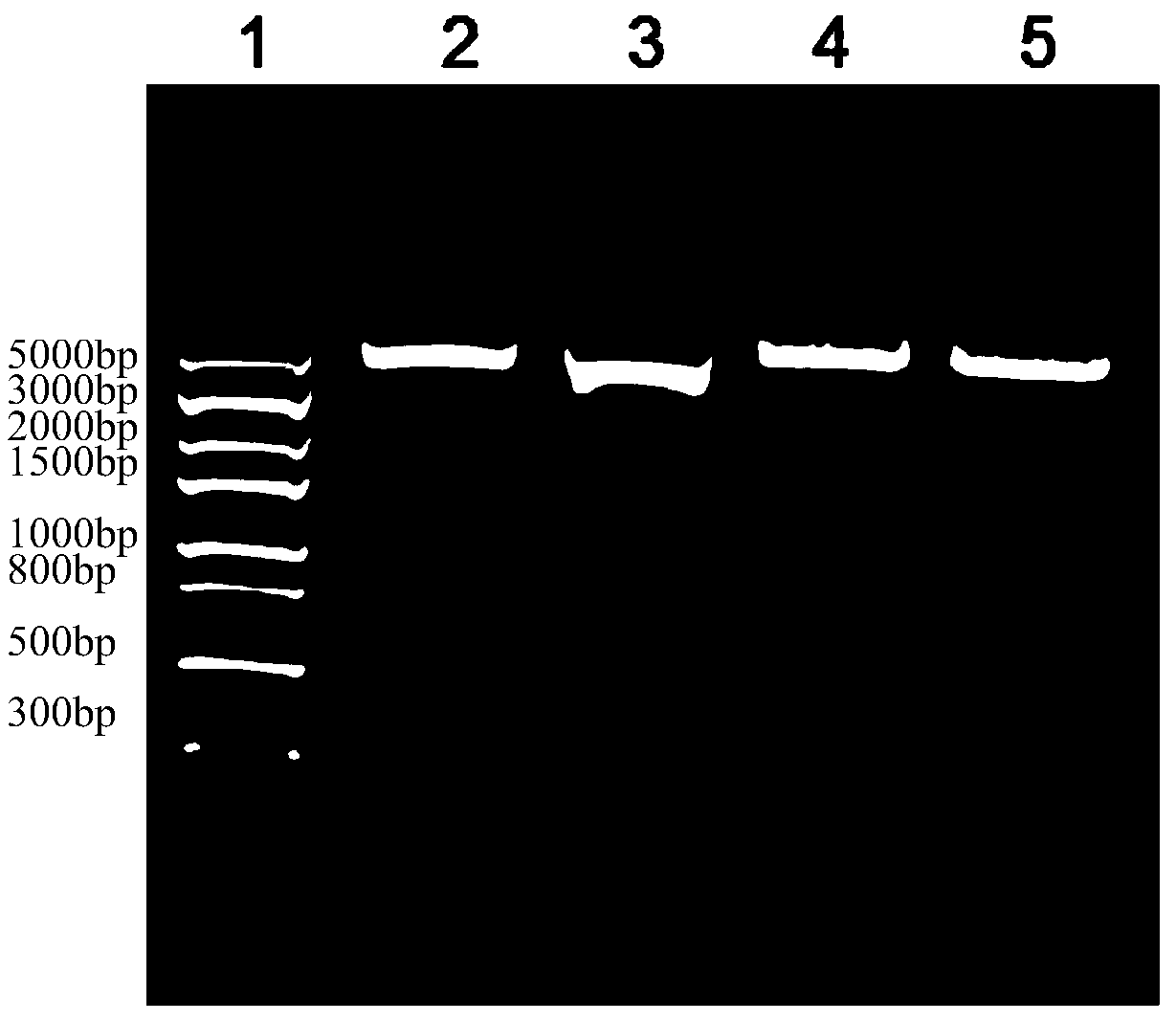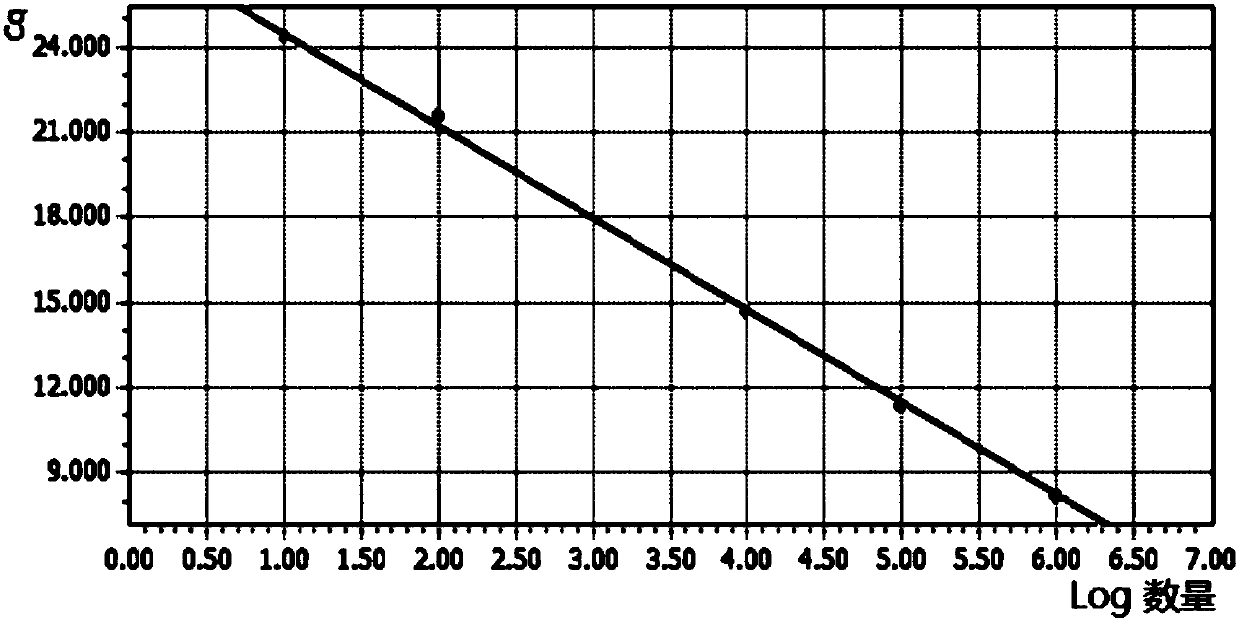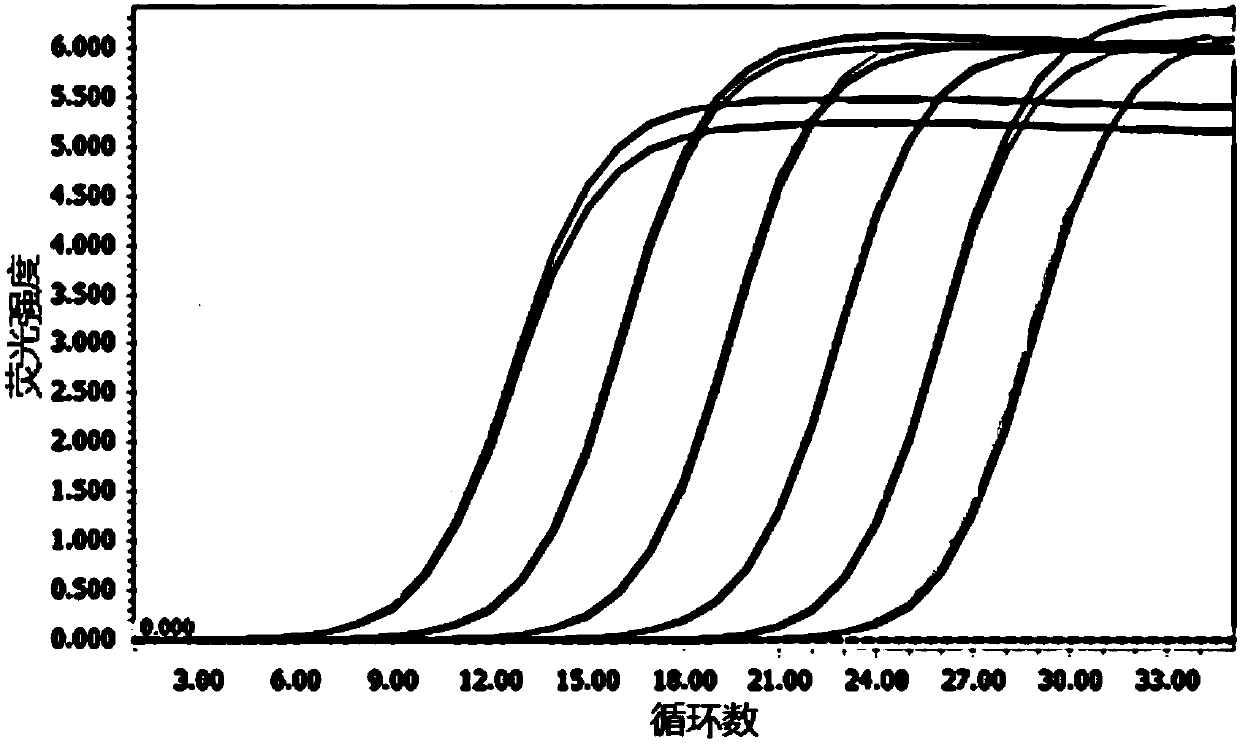Plasmid standard substance containing human thymalfasin target gene as well as preparation method and application of plasmid standard substance
A thymus method and standard product technology, which is applied in the field of detection of plasmid copy number in recombinant human thymus method bacteria, can solve the problem of inability to accurately quantify the plasmid copy number of recombinant human thymus method bacteria, and achieves good repeatability. Effect
- Summary
- Abstract
- Description
- Claims
- Application Information
AI Technical Summary
Problems solved by technology
Method used
Image
Examples
preparation example Construction
[0025] 3. Preparation of plasmid standards
[0026] The plasmid standard product of the present invention is a pET plasmid vector containing a specific nucleotide sequence inserted into the new target gene of the human thymus method. The vector can be amplified in Escherichia coli and prepared by using a plasmid extraction kit.
[0027] 4. Synthetic specific primers
[0028] In one embodiment, the primers for amplifying the new target gene of the human thymus method are specifically:
[0029] Upstream primer as shown in SEQ ID No: 2: 5'-CACAACTCTGATGCTGCTGT-3'
[0030] Downstream primer as shown in SEQ ID No: 3: 5'-ATCTCCCGTGATGCAGTTCT-3'.
[0031] 5. Using real-time fluorescent quantitative PCR to detect the copy number of recombinant human thymus method new engineered bacteria plasmid
[0032] (1) preparing a plasmid standard product containing the new target gene of the human thymus method, the plasmid standard product contains the Ssp-Ta1-Mxe gene sequence;
[0033](2)...
Embodiment 1
[0054] Embodiment 1: the preparation method of the plasmid standard product containing the new target gene of human thymus method
[0055] (1) Clone the target gene into the cloning vector: synthesize the new target gene of human thymus method shown in SEQ ID No: 1, and connect it to the cloning vector pUC57;
[0056] (2) Double enzyme digestion reaction: The cloning plasmid vector pUC57-Ssp-Ta1-Mxe containing the target gene and the expression plasmid vector pET-28a were digested according to the enzyme digestion systems shown in Table 1 and Table 2 respectively, using Nco I and Xho I carried out the double enzyme digestion reaction respectively.
[0057] Table 1: pUC57-Ssp-Ta1-Mxe double enzyme digestion system
[0058]
[0059] Table 2: pET-28a double enzyme digestion system
[0060]
[0061] Band recovery: Perform electrophoresis detection on the digested products of the double enzyme digestion reaction, and recover the bands with a size of about 5200bp in the dige...
Embodiment 2
[0065] Embodiment 2: Determination of recombinant E. coli plasmid copy number
[0066] Pick a recombinant Escherichia coli colony and inoculate it into 5ml of LB liquid medium (containing 100μg / m1 kanamycin), culture at 37°C and 220rpm for 3 hours (OD is about 2), take 200μl of centrifuged bacteria, wash with water Once, the thalline was taken by centrifugation, dissolved in 1ml of water, lysed at 95°C for 10 minutes, and diluted 10 times with water as the test solution.
[0067] Use Roche’s FastStart Essential DNA Green Master reagent, target gene amplification primers shown in SEQ ID No: 2 and SEQ ID No: 3, and water to prepare PCR premix reaction solution 1 to contain the new target gene of human thymus method The plasmid standard is used to build a standard curve for the template, such as figure 2 shown.
[0068] The PCR premix reaction solution 2 was prepared with Roche’s FastStart Essential DNA Green Master reagent, Escherichia coli single-copy gene primers and water,...
PUM
 Login to View More
Login to View More Abstract
Description
Claims
Application Information
 Login to View More
Login to View More - R&D
- Intellectual Property
- Life Sciences
- Materials
- Tech Scout
- Unparalleled Data Quality
- Higher Quality Content
- 60% Fewer Hallucinations
Browse by: Latest US Patents, China's latest patents, Technical Efficacy Thesaurus, Application Domain, Technology Topic, Popular Technical Reports.
© 2025 PatSnap. All rights reserved.Legal|Privacy policy|Modern Slavery Act Transparency Statement|Sitemap|About US| Contact US: help@patsnap.com



